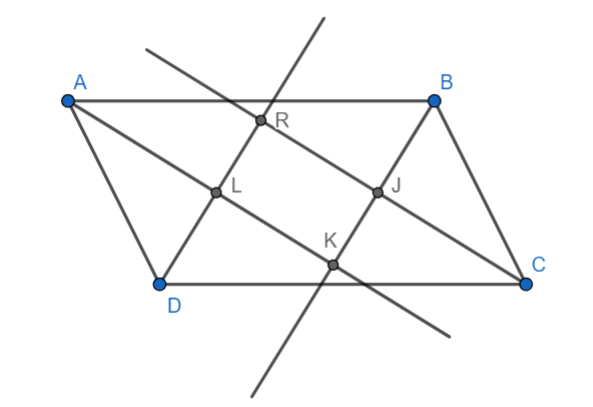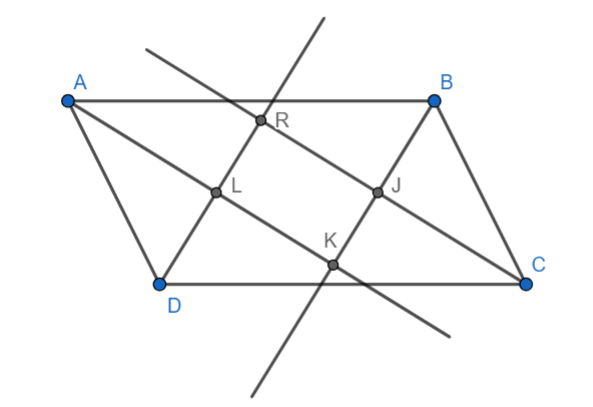
Prove that the quadrilateral formed by the intersection of angle bisectors of all angles of a parallelogram is a rectangle.


Answer
521.1k+ views
1 likes
Hint: In this given question, we can use the fact that adjacent angles of a parallelogram are supplementary meaning their sum is equal to
Complete step-by-step answer:
In this given question, we are asked to prove that the quadrilateral formed by the intersection of angle bisectors of all angles of a parallelogram is a rectangle.

Here, we are going to the fact that adjacent angles of a parallelogram are supplementary meaning their sum is equal to
Also, we are going to use the angle sum property of triangles which gives us that the sum of all the angles of a triangle is equal to
The process of solving is as follows:
In parallelogram ABCD, as adjacent sides are supplementary so,
As, angle bisectors bisect the angles into two equal halves,
Now, in
Now, as vertically opposite angles are equal,
From 1.3 and 1.4, we get,
Similarly, we can also obtain that,
So, we get,
As all the four angles of the quadrilateral are right angles, we can conclude that it is a rectangle.
Therefore, we have proved that the quadrilateral formed by the intersection of angle bisectors of all angles of a parallelogram is a rectangle.
Note: In this sort of question, we may have also used another triangle in order to get the basis as proof as an example instead of
Complete step-by-step answer:
In this given question, we are asked to prove that the quadrilateral formed by the intersection of angle bisectors of all angles of a parallelogram is a rectangle.

Here, we are going to the fact that adjacent angles of a parallelogram are supplementary meaning their sum is equal to
Also, we are going to use the angle sum property of triangles which gives us that the sum of all the angles of a triangle is equal to
The process of solving is as follows:
In parallelogram ABCD, as adjacent sides are supplementary so,
As, angle bisectors bisect the angles into two equal halves,
Now, in
Now, as vertically opposite angles are equal,
From 1.3 and 1.4, we get,
Similarly, we can also obtain that,
So, we get,
As all the four angles of the quadrilateral are right angles, we can conclude that it is a rectangle.
Therefore, we have proved that the quadrilateral formed by the intersection of angle bisectors of all angles of a parallelogram is a rectangle.
Note: In this sort of question, we may have also used another triangle in order to get the basis as proof as an example instead of
Recently Updated Pages
Master Class 11 Economics: Engaging Questions & Answers for Success

Master Class 11 Business Studies: Engaging Questions & Answers for Success

Master Class 11 Accountancy: Engaging Questions & Answers for Success

Questions & Answers - Ask your doubts

Master Class 11 Accountancy: Engaging Questions & Answers for Success

Master Class 11 Science: Engaging Questions & Answers for Success

Trending doubts
A boat goes 24 km upstream and 28 km downstream in class 10 maths CBSE

Why is there a time difference of about 5 hours between class 10 social science CBSE

The Equation xxx + 2 is Satisfied when x is Equal to Class 10 Maths

What is the full form of POSCO class 10 social science CBSE

Change the following sentences into negative and interrogative class 10 english CBSE

Discuss the main reasons for poverty in India




